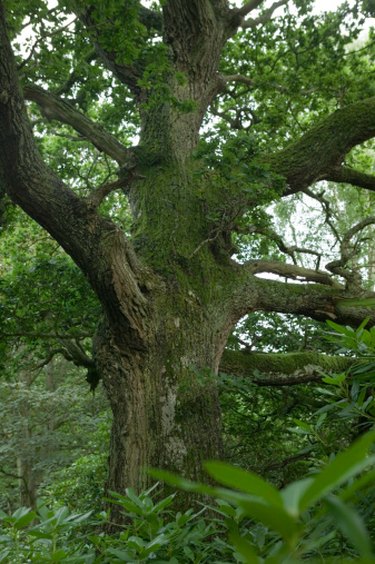One of the Philippines’ most incredible natural resources is the Mangkono tree, also known as “The Iron Wood Tree.” This unique and valuable tree is a true gem of the Philippines, particularly in regions like Surigao del Sur, Agusan del Sur, Palawan, Samar, and Dinagat Island. The Mangkono tree (sometimes called Magkono), scientifically known as Xanthostemon verdugonianus, holds several lesser-known facts that make it a true natural wonder deserving of our attention.
Tall and Skinny, Yet Incredibly Durable

At first glance, the Mangkono tree might seem unimposing due to its relatively small to medium size, with a diameter of about 20-36 inches and a height of 30-40 feet. However, don’t be deceived by its slender appearance. The Mangkono tree boasts a hard, thin, and smooth bark, contributing to its incredible durability. Even when faced with the harshest weather conditions, these trees stand tall, a testament to their strength and tenacity.
Impenetrable Strength
The density and hardness of the Mangkono tree set it apart from other hardwood species. It is so tough that cutting it down, even with modern tools, is challenging. Using diamond-tipped saws and ample water for lubrication, it takes a staggering four days to fall a twenty-foot Mangkono tree. Even termites find it impossible to penetrate the dark-colored, sturdy wood, making it an ideal choice for long-lasting, robust structures.
Wooden Heirlooms
Furniture crafted from Mangkono wood is highly coveted and considered heirloom pieces. In the towns of Surigao del Sur, these items are cherished for their ability to last for generations and centuries. The National Museum in Butuan showcases Mangkono wood products as a testament to the wood’s remarkable longevity. These heirloom pieces are not just functional; they also carry cultural and historical significance, reflecting the deep-rooted traditions of the Philippines.
Scarcity and Endangerment
Unfortunately, the Mangkono tree is endangered, primarily due to habitat loss and deforestation. The increasing demand for Mangkono-made furniture has put immense pressure on local resources, exacerbating the scarcity of this remarkable tree. The situation has been further compounded by large-scale mining and logging encroachment in Surigao del Sur, making it increasingly rare to encounter mature Mangkono trees in the wild.
The value of Mangkono wood is not a recent discovery; the Filipino people have cherished it for generations. It was the foundation for houses, boat poles for balangays, and caskets for the departed. Before the age of plastics, Mangkono wood was used for propeller shafts in steamships, tool handles, and even bowling balls. Its reputation for durability and strength has stood the test of time.
Tree of Life
The Mangkono tree is more than just a valuable hardwood; it is an essential part of the cultural landscape of Surigao del Sur. It provides a source of livelihood for local communities, as they use abandoned slabs of Mangkono to craft wood products. Skilled artisans create chopping boards, centerpieces, paperweights, and other exquisite items from this rare wood. The Mangkono tree symbolizes the resilience and strength of the Surigao people, and it is an integral part of their way of life.
In a world dominated by the giant redwoods of the western United States, the Mangkono tree might be considered a “David” in comparison. Yet, it possesses unique characteristics and an indomitable spirit that could allow it to outlive even the mightiest “Goliath.” Its rarity, durability, and cultural significance make it a true gem of the Philippines and a tree worth protecting and preserving.
This article serves as a call to action, spreading essential information about the Magnkono. By increasing awareness of the true value of this rare and endangered species, we hope to inspire people to join the effort to protect and preserve this natural wonder. Mangkono is a source of pride for the Surigaonons and the entire Filipino people. It is a living testament to our natural world’s enduring strength and beauty. Let us cherish and protect this remarkable tree for generations, ensuring it remains a vital part of our cultural and ecological heritage. Mangkono: The Iron Wood Tree, a true treasure of the Philippines.
